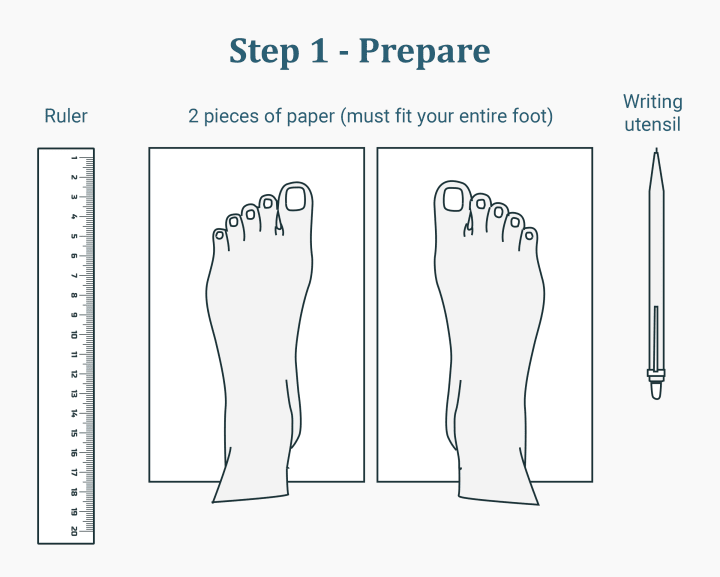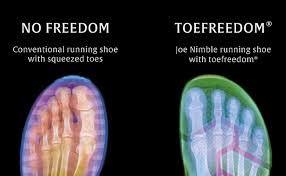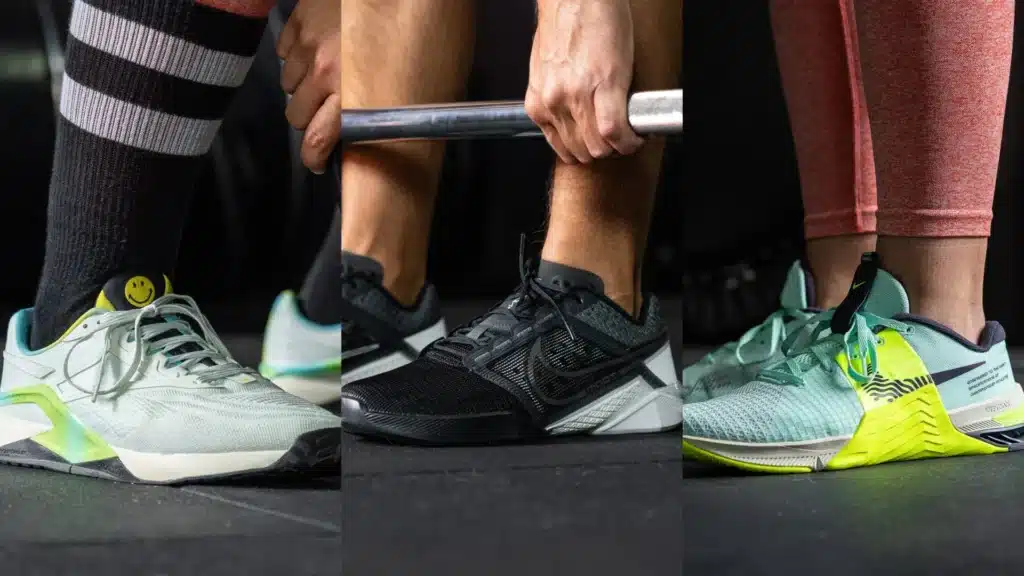When it comes to CrossFit, having the right shoes can make a world of difference – especially if you are looking to check fit of CrossFit shoes. From stability to comfort, CrossFit shoes are engineered to support high-intensity workouts that push your body to the limit. But how do you know if your shoes are truly up to the task? Learning how to check the fit of CrossFit shoes is crucial to your success in the box. Let’s dive into why getting the right fit is essential, and the 7 tips you need to follow to ensure your shoes are primed for peak performance.
Table of Contents
Why Proper Fit in CrossFit Shoes Matters
Before we dive into how to check the fit of CrossFit shoes, let’s talk about why this is so important. CrossFit workouts are dynamic—they involve everything from lifting heavy weights and jumping to running and climbing. If your shoes don’t fit properly, you risk discomfort, poor performance, and even injury. A well-fitted CrossFit shoe provides balance, agility, and support, helping you perform at your best and avoid common injuries like blisters, foot pain, and ankle strains.
1. Measure Your Feet Correctly

The first and most critical step in ensuring you have the right shoes is to measure your feet. Most people are surprised to learn that their shoe size changes over time due to factors like age, weight fluctuation, and activity level. To check the fit of CrossFit shoes accurately, it’s essential to measure both the length and width of your feet, preferably at the end of the day when your feet are at their largest.
Tip: Use a foot-measuring device or get measured by a professional at a sports store to avoid guessing your size.
2. Consider Your Workout Style
CrossFit is a mix of weightlifting, gymnastics, and endurance exercises, which means your shoe needs to handle different kinds of stress. If you do a lot of heavy lifting, you’ll need a shoe with a firm, flat base. But if you incorporate more running and jumping into your routine, flexibility and cushioning become more important.
To check the fit of CrossFit shoes based on your workout style, test them during different activities. Shoes that fit well for lifting might not be ideal for running WODs, so it’s crucial to match your shoe to your routine.
3. Leave Room in the Toe Box

The toe box is one of the most important areas to consider when checking the fit of CrossFit shoes. You need some wiggle room to avoid cramping or blisters. There should be about a half-inch of space between your longest toe and the front of the shoe.
If your toes feel cramped or pressed against the front, it’s a sign the shoes are too small. On the other hand, too much space can cause your feet to slide around, which could lead to instability during fast movements.
Pro Tip: Use the “thumb rule” to ensure there’s enough space. You should be able to press your thumb down on the front of the shoe without hitting your toes directly.
4. Heel Security: The Key to Stability
While the toe box needs some space, the heel area should be snug. A secure heel helps with overall stability, especially during exercises like squats, deadlifts, and box jumps. If your heel slips while you’re moving, it’s a sign the shoes are too big, and that lack of security could compromise your form during lifts.
To check the fit of CrossFit shoes around the heel, try doing some explosive movements like burpees or jump rope. If you notice any slippage, it’s time to size down.
5. Arch Support: Not Just for Comfort

When you check the fit of CrossFit shoes, don’t overlook arch support. CrossFit shoes should offer enough support for your arch type, whether you have flat feet or high arches. Proper arch support distributes weight evenly, improving your performance and reducing foot fatigue during long WODs.
If you feel any strain in the arches of your feet during or after a workout, it may be a sign that your shoes don’t offer enough support. Insoles can also help if the shoe doesn’t provide the necessary arch structure.
6. Check Flexibility for Versatile Movements
One of the unique demands of CrossFit is the need for shoes that provide stability for lifting but flexibility for running, jumping, and climbing. The ideal CrossFit shoe should bend slightly at the forefoot but remain firm in the midsole.
To check the fit of CrossFit shoes in terms of flexibility, try bending the shoes at the toe box. They should flex but not fold completely. When performing exercises like box jumps or sprints, your shoes should allow you to move freely without feeling stiff.
7. Don’t Forget Durability
CrossFit shoes take a beating. From rope climbs to heavy lifts, they need to withstand high-impact exercises day after day. Durability is a key factor when you check the fit of CrossFit shoes. Look for shoes with reinforced materials in high-wear areas like the toe, heel, and midsole.
Check the stitching and material quality when purchasing CrossFit shoes. Investing in durable shoes will save you money in the long run, as you won’t have to replace them as often.
How Often Should You Replace CrossFit Shoes?
CrossFit shoes are put through rigorous tests with every workout, so they don’t last as long as typical running or casual shoes. On average, a good pair of CrossFit shoes will last 6 to 12 months, depending on how often you work out and the intensity of your sessions.
Signs that it’s time for a new pair include:
- Worn-out soles
- Lack of support or cushioning
- Noticeable discomfort or pain after workouts
To maintain performance and safety, check the condition of your shoes regularly.
Finding the Perfect CrossFit Shoe for You
There are plenty of excellent CrossFit shoes on the market, but which one is the best for you? Some of the top-rated options include shoes from brands like Rogue Fitness, known for their durability and support. Rogue’s CrossFit shoes are built to handle the demands of high-intensity workouts, providing superior grip, flexibility, and stability.
For a comprehensive review of the best shoes to check the fit of CrossFit shoes, visit Rogue Fitness.
CrossFit Shoe Sizing Tips from Experts
When buying CrossFit shoes online, many athletes recommend trying on shoes from the same brand in-store to ensure the right fit. Different brands might have varying sizes and fits, even if the listed shoe size is the same.
For example, athletes who have used Reebok’s Nano series or Nike’s Metcons often mention slight differences in width and support. Visiting a store and trying out these shoes before purchasing online can make a big difference in comfort and performance.
If you’re ordering from an online store and can’t try them on first, make sure you check the return policy. Many companies, like Rogue Fitness and CrossFit Official, offer hassle-free returns if the shoes don’t fit as expected.
Internal Links:
For more information on CrossFit gear, check out CrossFit Angier’s Blog.
FAQ: How to Check Fit of CrossFit Shoes
Q: How much space should be in the toe box of my CrossFit shoes?
A: There should be about a half-inch of space between your longest toe and the front of the shoe, allowing some room for movement without being too loose.
Q: How often should I replace my CrossFit shoes?
A: Most CrossFit shoes need to be replaced every 6 to 12 months, depending on how frequently you work out and the intensity of your WODs.
Q: How can I check the flexibility of CrossFit shoes?
A: Bend the shoes slightly at the forefoot. They should flex but not fold completely. The midsole should remain firm to offer stability during weightlifting movements.
Q: Do I need special CrossFit shoes for weightlifting and cardio?
A: CrossFit shoes are designed to offer a balance between stability for weightlifting and flexibility for cardio. However, if you primarily lift heavy weights, you may want a shoe with a firmer base for added support.
Q: Where can I find durable CrossFit shoes?
A: Check out options from brands like Rogue Fitness, which offers shoes built for durability and performance. You can explore their selection here.
Choosing the Right CrossFit Shoes for Specific Workouts
While knowing how to check the fit of CrossFit shoes is essential, it’s equally important to consider the types of workouts you’ll be performing. Not all CrossFit shoes are created equal, and certain designs cater better to specific workout modalities within CrossFit. From lifting-heavy days to more cardio-intense sessions, having the right shoes can enhance your performance and provide the necessary support.
In this section, we’ll dive into how to match your CrossFit shoes with the type of workouts you’ll be performing most often. By doing this, you’ll ensure that you’re not only choosing a pair that fits well but also selecting shoes designed for the exact demands of your WODs.
CrossFit Shoes for Weightlifting Days
CrossFit incorporates a lot of weightlifting, whether it’s Olympic lifts like the snatch and clean and jerk or traditional powerlifting movements like deadlifts and squats. If you’re primarily focused on strength training, you’ll need a shoe that offers a firm, flat base and exceptional stability.
What to Look For in Weightlifting CrossFit Shoes:
- Flat Sole: A flat sole provides a stable platform for lifting heavy weights. Shoes with a raised or cushioned heel, like running shoes, can cause instability during lifts, making it harder to maintain proper form.
- Minimal Cushioning: While cushioning is essential for running, it’s a hindrance when lifting heavy weights. Too much cushioning can lead to imbalance and energy loss, particularly during compound lifts like squats and deadlifts.
- Heel-to-Toe Drop: A low heel-to-toe drop (around 4 mm or less) is ideal for weightlifting. Some lifters prefer specialized weightlifting shoes with a slight heel, which helps with ankle mobility during deep squats, but this depends on your lifting style.
- Strap Support: Shoes like the Nike Metcon or Reebok Nano often feature mid-foot straps that offer additional support, locking your foot in place during heavy lifts.
Recommended Shoe:
Nike Metcon 8 – Known for its stability, the Nike Metcon 8 has a flat base and minimal cushioning, making it an excellent choice for heavy lifting days. Its firm heel provides the support needed for squats and deadlifts, while its design ensures that your foot stays secure throughout.
CrossFit Shoes for Running and Cardio-Intensive WODs
On days when the workout involves more running, rowing, or jumping, flexibility and cushioning take center stage. CrossFit WODs that emphasize metabolic conditioning require shoes that can handle the high impact from repeated movements while still offering support.
What to Look For in Running/Conditioning CrossFit Shoes:
- Cushioning in the Midsole: For cardio-heavy workouts, look for shoes with enough cushioning to absorb shock without sacrificing stability. This reduces the risk of injury and improves comfort during high-rep box jumps, double-unders, and sprints.
- Lightweight Design: A lighter shoe reduces fatigue, especially during long runs or high-rep movements. Heavy, bulky shoes may slow you down and limit your agility.
- Breathability: During long cardio sessions, your feet are likely to get hot and sweaty. Shoes with mesh uppers or breathable materials will help keep your feet cool and dry, improving overall comfort.
- Flexibility: CrossFit shoes for cardio should flex at the forefoot, allowing you to run and jump with ease. A stiff shoe can hinder your range of motion and make certain movements feel unnatural.
Recommended Shoe:
Reebok Nano X3 – The Reebok Nano X3 is a great all-around shoe, but its flexibility and comfort make it particularly suited for cardio-intensive WODs. With enough cushioning to handle sprints and jumps, it still provides the stability required for lifting.
CrossFit Shoes for Versatile, Mixed-Modal Workouts
Most CrossFit athletes won’t have the luxury of switching shoes mid-WOD, which is why many need a shoe that can handle the diversity of CrossFit workouts—lifting, running, jumping, and everything in between. A versatile shoe must offer a balance of stability, flexibility, and durability to perform well across the board.
What to Look For in Versatile CrossFit Shoes:
- Balanced Cushioning: You’ll want a shoe that provides cushioning for jumps and sprints, but not so much that it compromises stability for weightlifting.
- Sturdy Sole with Traction: Versatile shoes need a durable sole that can handle rope climbs, wall balls, and other intense movements without wearing down quickly. Look for shoes with extra grip and reinforced materials in high-wear areas like the outsole and toe box.
- Moderate Heel-to-Toe Drop: A drop between 4 to 6 mm tends to offer the right balance for both lifting and cardio movements. It’s not as flat as a specialized lifting shoe but not as raised as a running shoe, making it perfect for mixed-modal workouts.
- Durability: Rope climbs, box jumps, and burpees put a lot of wear and tear on your shoes. The best CrossFit shoes for mixed-modal workouts should be designed with durability in mind, using reinforced materials to prevent early breakdown.
Recommended Shoe:
Inov-8 F-Lite 260 V2 – The Inov-8 F-Lite 260 V2 is designed for CrossFit athletes who need a shoe that performs well in every area. With solid traction for rope climbs, enough flexibility for running, and adequate support for lifting, it’s an excellent choice for those who perform a variety of movements in their WODs.
CrossFit Shoes for Rope Climbs and Gymnastics Movements
CrossFit shoes designed for rope climbs and gymnastics movements require specialized features. Rope climbs, for example, can shred the sides of your shoes if they aren’t built for it, and handstand push-ups or ring dips demand shoes that allow for quick movements and balance.
What to Look For in Rope Climb/Gymnastics CrossFit Shoes:
- Rope-Proof Sole and Upper: Shoes with reinforced sides and extra grip on the outsole are essential for rope climbs. This feature not only extends the life of your shoes but also provides extra traction for securing the rope between your feet.
- Lightweight and Flexible: Gymnastics movements like muscle-ups and handstand push-ups require a shoe that is lightweight and flexible, allowing you to move quickly and maintain balance.
- Low-Profile Design: Shoes that are too bulky or high off the ground can make it harder to perform gymnastics movements. A low-profile shoe gives you better control and allows for faster transitions during gymnastics-based WODs.
Recommended Shoe:
NOBULL Trainers – NOBULL shoes are known for their durability, especially when it comes to high-impact movements like rope climbs. The reinforced upper and sole provide excellent grip and protection, while their low-profile design makes them ideal for gymnastics movements.
Investing in Multiple Pairs of CrossFit Shoes
After considering the specific needs of various workouts, you may realize that no single pair of shoes can truly meet all your CrossFit needs. If you’re serious about your performance, investing in multiple pairs of shoes—one for lifting, one for running, and one for versatility—might be your best bet.
By alternating between pairs depending on the workout, you’ll also extend the life of your shoes. If you use the same pair of CrossFit shoes for every type of workout, they’ll wear down faster, which means you’ll need to replace them more often.
Here are a few tips for maintaining your CrossFit shoes:
- Rotate Between Pairs: If you work out multiple times a week, consider rotating between different shoes to prevent excessive wear and tear on any one pair.
- Clean Regularly: After particularly sweaty WODs or outdoor workouts, clean your shoes to prevent odor and prolong their lifespan.
- Air Them Out: Let your shoes dry out between workouts, especially if you perform a lot of high-intensity cardio that leads to excessive sweating.
Conclusion: Make Your Shoes Work for You
Choosing the right CrossFit shoes and checking their fit is more than just about comfort; it’s about improving your performance, staying injury-free, and getting the most out of your workouts. By investing time in finding the right pair for your specific workout needs, you’ll enhance your abilities in the box and hit new PRs more easily.
Whether you’re lifting, running, or doing gymnastics, remember to check the fit of CrossFit shoes regularly and consider switching up your footwear for different workout types. With the right shoes, you’ll be equipped to crush any WOD that comes your way.
For more expert tips on CrossFit gear and fitness advice, check out CrossFit Angier’s Blog, where we dive deeper into everything CrossFit.



